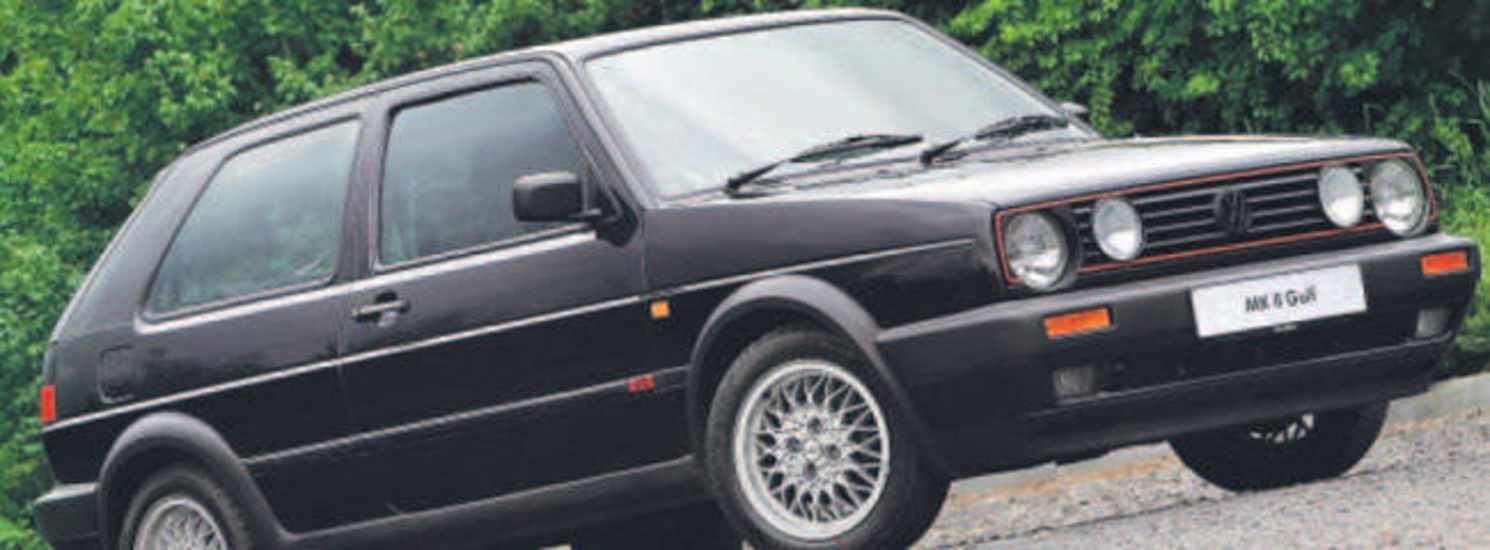The Japanese are so dominant in the small performance hatch arena today that if you were to land on this planet for the first time this week you could believe they wrote the book on them. Actually they didn’t, they were created in Europe back in the 1960s when Mini Coopers showed you didn’t need a V8 to go fast, a long time before the Japanese cottoned on to the idea and made it their own.
Subaru’s WRX stands out as the hot hatch hero, but just about every other Japanese carmaker has a sporty model in their range. The Europeans have continued to refine the formula and can claim to have hot hatches, like the VW GTi, that are also refined and sophisticated. The GTi made a fleeting appearance on the local market back in 1990 when the then importer launched a detuned version of the European model.
Having heard and read of the GTi’s reputation for 15 years or so the model that came here was a bit of a disappointment. It looked the same, and had the right badges, but lacked the sizzle of the model sold in Europe and failed to win over local performance car nuts who were largely still hooked on big V8s.
MODEL WATCH
The Golf GTi that landed here in 1990 was already a dated model in Europe, being part of the second generation Golf that was launched in 1983. It only just beat the major update that came a year later, so the excitement of finally being able to buy the GTi was somewhat dulled.
Still, the GTi’s reputation as the pace setter in the small front-wheel drive hot hatch market had reached Australia in the preceding years and the news it would finally come here was warmly welcomed.
The enthusiasm quickly waned, however, when it was realized that the importer had chosen to market it here as a luxury sporting hatch rather than an all-out performance model. The engine chosen for Australia was a mundane 1.8-litre single overhead camshaft four-cylinder engine that was strangled by emission gear and developed just 77 kW at 5400 revs and 155 Nm at 3800 revs.
With those sorts of numbers it’s clear the GTi wasn’t a rocketship. Instead it was smooth and refined, terms normally used when a car fails to excite the senses. A five-speed manual gearbox was standard at launch, but a three-speed auto was added in 1991.
While the local GTi lacked the punch of a hot hatch it wasn’t lacking in luxury with a raft of features to justify its rather exotic price tag. It came standard with air, central locking, a trip computer, fog lights, Pioneer sound, and mirrors that were powered and heated, but oddly it didn’t have power windows.
The GTi’s shape was functional rather than pretty. Its lines were forthright, simple and to the point, there was nothing to offend the eye or equally attract it. Inside there was pretty good room with comfortable seating front and rear, with a decent sized boot left over for luggage if needed. The dash was also functional and well laid-out, but the Europeans hadn’t quite made it to the level of the Japanese when it came to fit and finish of the interior parts. They were fiddly, clearly plastic, and weren’t put together very well.
On the road the modest output of the engine dulled the GTi’s performance, but with a reasonable amount of torque available in the mid-range it could be stirred along with the well-matched ratios in the five-speed manual gearbox. If the engine didn’t excite the chassis was highly praised for its reserves of grip and its nimbleness. The power steering was a little vague, but the driver still had a good road feel and it didn’t load up when cornering as some front drivers were inclined to do. Overall the ride was surprisingly supple when it was expected to be rock hard and unforgiving.
IN THE SHOP
Back in 1990 the Europeans were still coming to grips with the build quality of their Japanese rivals. They weren’t producing cars with anything like the same quality. VW was similarly struggling to get up to the Japanese standard for general fit and finish, and their shortcomings were clearly in view inside the GTi.
By today’s standards the plastics were poor, and made for European conditions rather than the ferocity of the sun they would have to contend with here. As a consequence they warped, buckled and split under the relentless attack from the sun. The interior trim also suffered under the tough local conditions, and was soon showing signs of wear and tear. Look also for faded metallic paint, again a legacy of the change to water-based paints that the industry was going through, and the force of the local sun.
Mechanically the GTi is robust and reliable, and little of a serious nature often goes wrong with them. It’s important though that they are well serviced, with regular oil changes. If the oil isn’t changed regularly the valve guides can wear and that will lead to oil use.
Check for a service record, and when driving look for oil smoke from the tail pipe on overrun. They can have problems with second gear synchro, but it’s not expensive to replace it if needed. Parts are reasonably priced and readily available, and servicing isn’t expensive if you seek out a specialist rather than use the factory dealers. Maintained well it’s generally held that a GTi will do 300,000 km or so without major problems.
CRUNCH TIME
An agile chassis with nimble handling was the GTi’s main safety mechanism in an era before ABS was widely used and airbags weren’t yet known about. Sturdy construction comes into play when the metal starts to crumble.
AT THE PUMP
Wearing a performance tag means a GTi is sometimes driven harder than other cars, and the fuel economy suffers. Look for 9.0-10.5 L/100 km in normal use around town.
LOOK FOR
• Respected badge
• Modest performance
• Solid looks
• Roomy interior
• Robust and reliable
• Service record a must
THE BOTTOM LINE
• Had the badge, but disappointedly it didn’t have the grunt to back it up.
RATING
• 60/100
Volkswagen Golf 1990:
| Engine Type | Inline 4, 1.8L |
|---|---|
| Fuel Type | Unleaded Petrol |
| Fuel Efficiency | 8.5L/100km (combined) |
| Seating | 4 |
| Price From | $2,970 - $4,620 |
Range and Specs
| Vehicle | Specs | Price* |
|---|---|---|
| Base | 1.8L, Unleaded Petrol, 3 SPEED AUTOMATIC | $3,080 - $4,840 |
| Base | 1.8L, Unleaded Petrol, 5 SPEED MANUAL | $2,970 - $4,620 |







.jpg)

.jpg)

.jpg)


